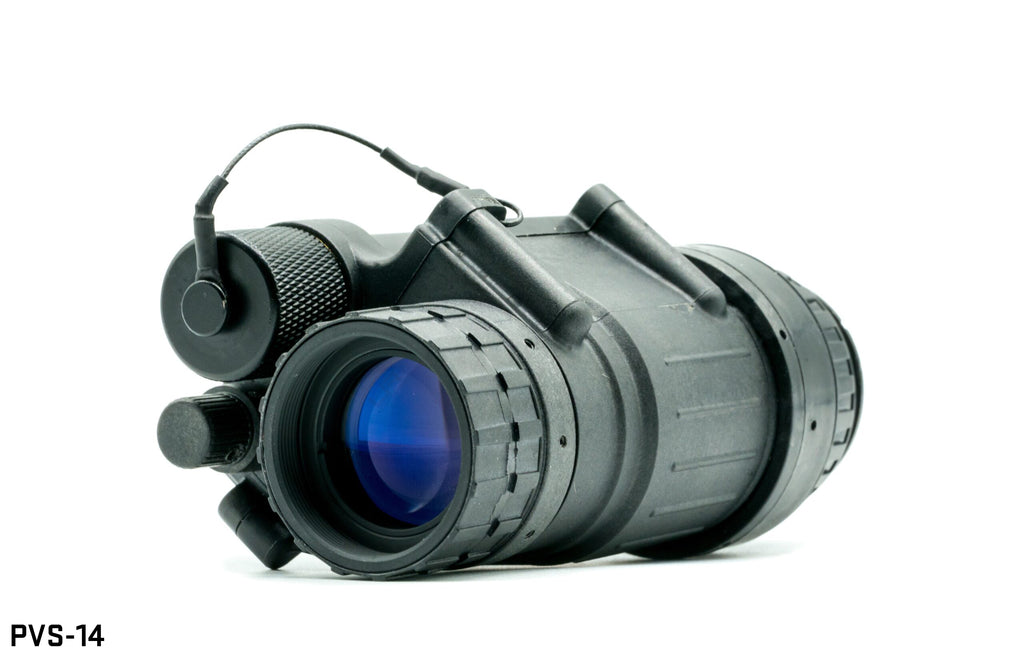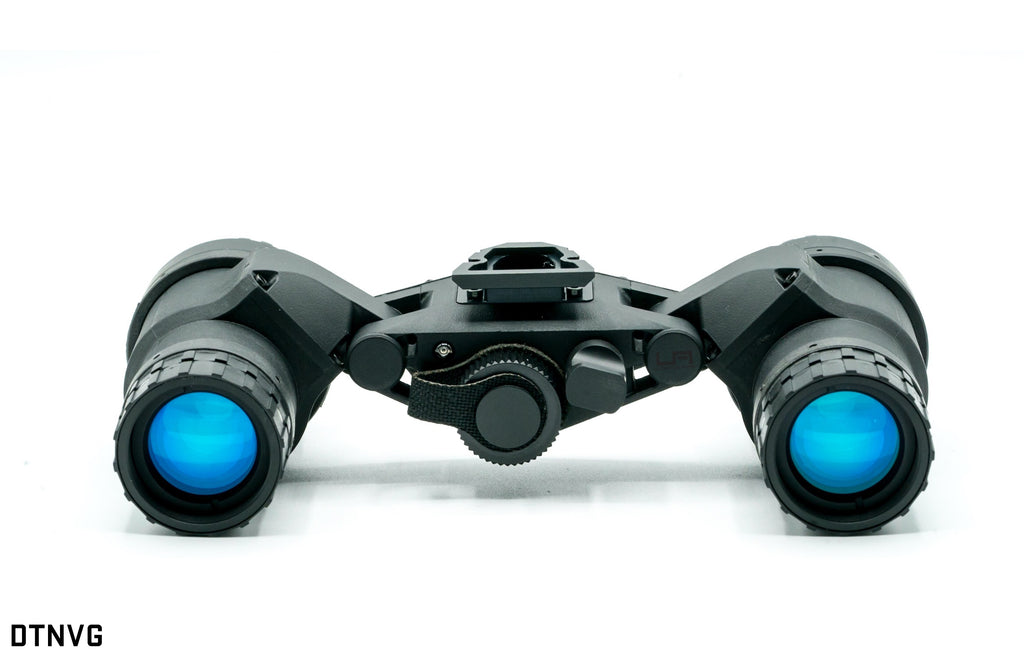How to Get Into Night Vision
Night vision is an incredibly awesome tool that is becoming increasingly popular in the shooting, hunting, and law enforcement communities. Although night vision is incredibly fun and useful, it can be intimidating to get into. There are tons of options, terms, and misinformation that makes it difficult for the consumer, whether a professional end user or a enthusiast, to decide what they need and how much it should cost.
Night vision gives users the ability to see in the dark. This is accomplished with image intensifier tubes. These tubes are manufactured in two general categories of finished goods, clip-on night vision and helmet mounted night vision. Under these two broad categories there are tons of options with vast ranges in price. However, these two broad categories have two basic subcategories, the housing and tube or tubes. Essentially the housing is what you see on the outside. The housing is the “model” of your night vision. Then your tube or tubes are installed into the housing to give your unit life. We will break it down in a few categories that buyers should keep in mind when deciding what night vision.
Tubes
The image intensifier tube(s) is the heart and soul of your night vision device. The tube is what is inside your housing that actually gives you the ability to see in the dark. Image intensifier tubes have a few differences, however, there are three basic categories that are often given to buyers to choose from. Those are autogated / non-gated, filmless / thin-film, green / white phosphor.
Autogating is the process of the tubes power supply rapidly controlling the amount of power the tube receives, thus increasing or decreasing the sensitivity to light. This happens at an extremely fast rate. In most cases, we only recommend autogated tubes. Autogating will extend the life of the tube and help protect it from light damage.
Filmless versus thin filmed tubes is always a topic of what is better. Filmless tubes will perform better in most instances than a comparable thin-filmed tube. Filmless tubes have better light transmission and handle high light and extreme low lights better than thin-filmed tubes. However, with that being said, thin-filmed tubes are slightly cheaper and still offer incredible performance. It is important to understand that tubes are like diamonds, no two tubes are the exact same and all perform slightly differently.
Last is the biggest debate on the internet…. GREEN OR WHITE PHOSPHOR? It is very important to understand that although there are some performance benefits to white phosphor, the color of a tube is simply the phosphor used. There are very bad white phosphor tubes and very good green phosphor tubes. The number one misconception we see from customers is assuming all white phosphor is better than green phosphor tubes. There are still very low spec white tubes being sold. This is why tube specs are important. With that being said, when looking at a green tube and white tube with comparable specs the white phosphor is much better. The white phosphor produces an overall better image. The image appears cleaner and more detailed. Shadows are also easier to read and do not blend together as much as with green phosphor. These small benefits produce an overall superior image.
Housing
Housings are broken down into three main categories: monocular night vision, binocular night vision, and clip-on night vision.
 A monocular is a single tube that is intended to be helmet mounted and cover a single eye. The most well-known and widely accepted monocular is the PVS-14. PVS-14’s are extremely cost effective, versatile, and rugged. Depending on tube, components, and tube they range from $3k-$5k.
A monocular is a single tube that is intended to be helmet mounted and cover a single eye. The most well-known and widely accepted monocular is the PVS-14. PVS-14’s are extremely cost effective, versatile, and rugged. Depending on tube, components, and tube they range from $3k-$5k.
Binocular night vision is a helmet mounted solution that covers both eyes. Although binos are significantly more expensive than a monocular, the performance gains are definitely worth it for most applications. Having both eyes aided is much easier to adjust to the night vision and provides better perceived depth perception and field of view. Although the field of view and depth perception is no different than a monocular, the brain interprets the visual information easier when both eyes are aided. There are tons of binocular housings on the market but in general they all are either fixed bridge or an articulating unit. We have an article breaking down the differences here.

Finally, clip-on night vision is night vision devices that are designed to be clipped on the rail of your gun in front of your day optic. Clip-ons provide the shooter the ability to use the same gun for both day and night and not switch optics. There are several different models of clip-on night vision on the market. When looking at quality clip-ons what mainly separates them is tube, magnification range, and recoil rating. We recommend looking at the needs of the platform and prioritize what magnification range and recoil rating is needed. This then helps narrow down what tube will work best for the intended distance and environment.
Helmet Mounted or Clip-On?
Unless there is a specific need for distance or LE application, we always recommend that buyers start with a helmet mounted solution. The reason for this is the nature in which clip-on night vision devices are designed to work. Clip-on devices do just that, they clip-on the rail in front of the users day scope to provide night vision. The user looks through their day scope and through the clip-on in front of their scope to see. Although this provides variable magnification capability, the huge downside of a clip-on unit is the user must point a gun at whatever it is they are trying to see. This could result in pointing guns at things that we do not want to shoot. Because of this we recommend that buyers start with helmet mounted night vision as it lets you scan and see hands free without having to have your gun pointed at what you want to see. Once you decide helmet mounted or clip-on you can further break it down to more specifics.

Licentia Arms Co.
Licentia Arms takes a customized approach to night vision. We believe that night vision should be application driven and tailored to the client. If you have future questions, please feel free to shoot us an email and we can help: https://licentiaarmsco.com/contact-us/ You can also check us out on Instagram @licentia_arms.
Article By:
Tyler Roberts
Co-Owner of Licentia Arms